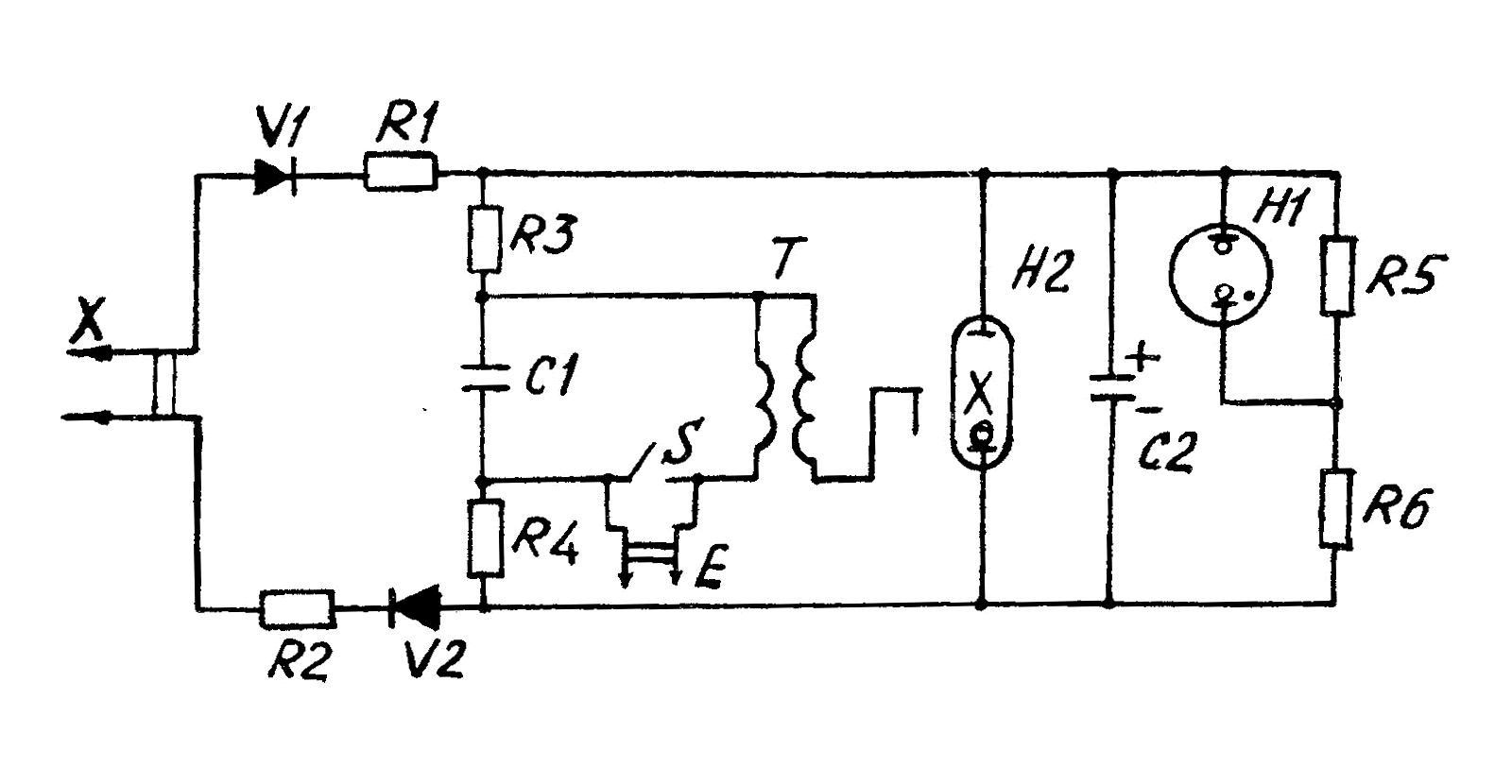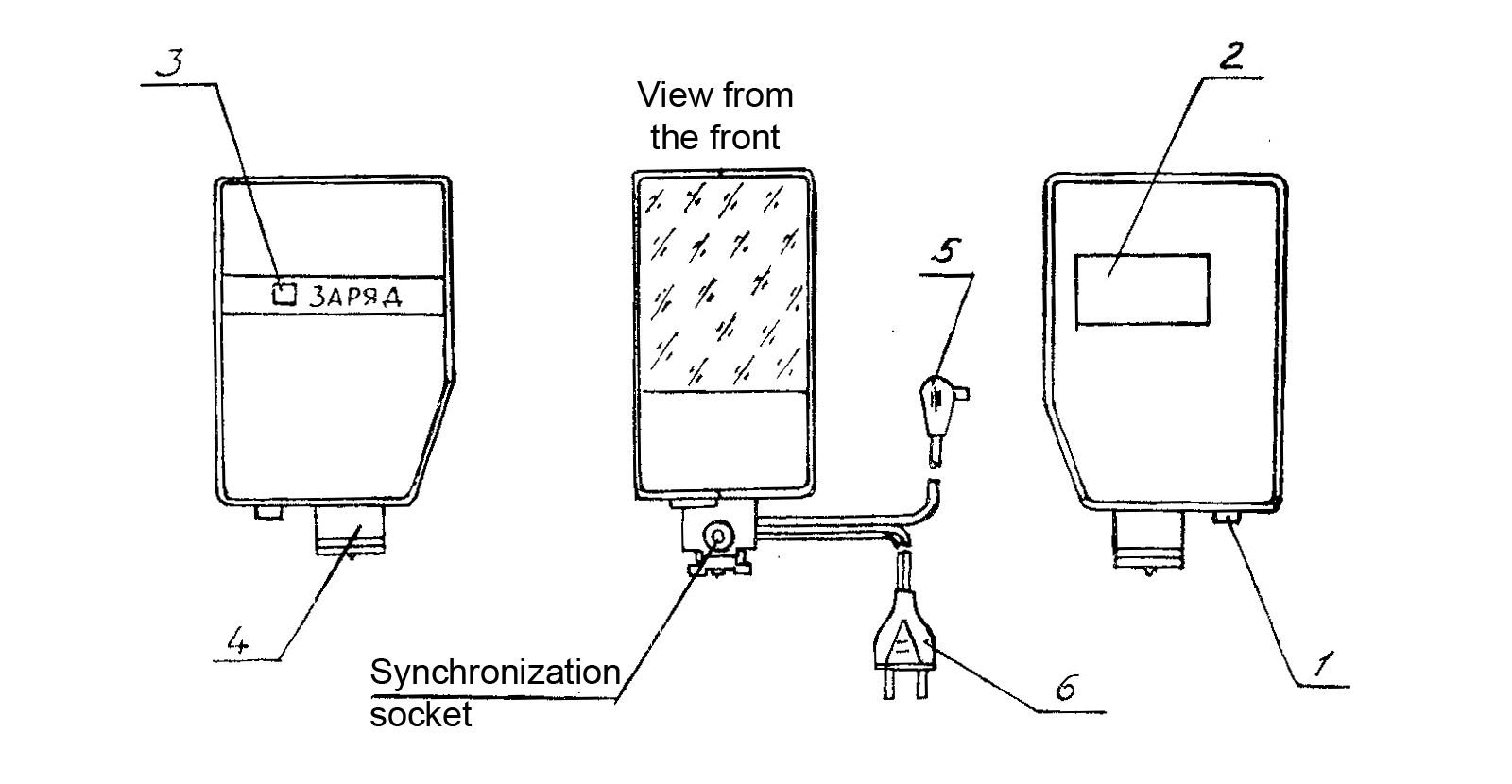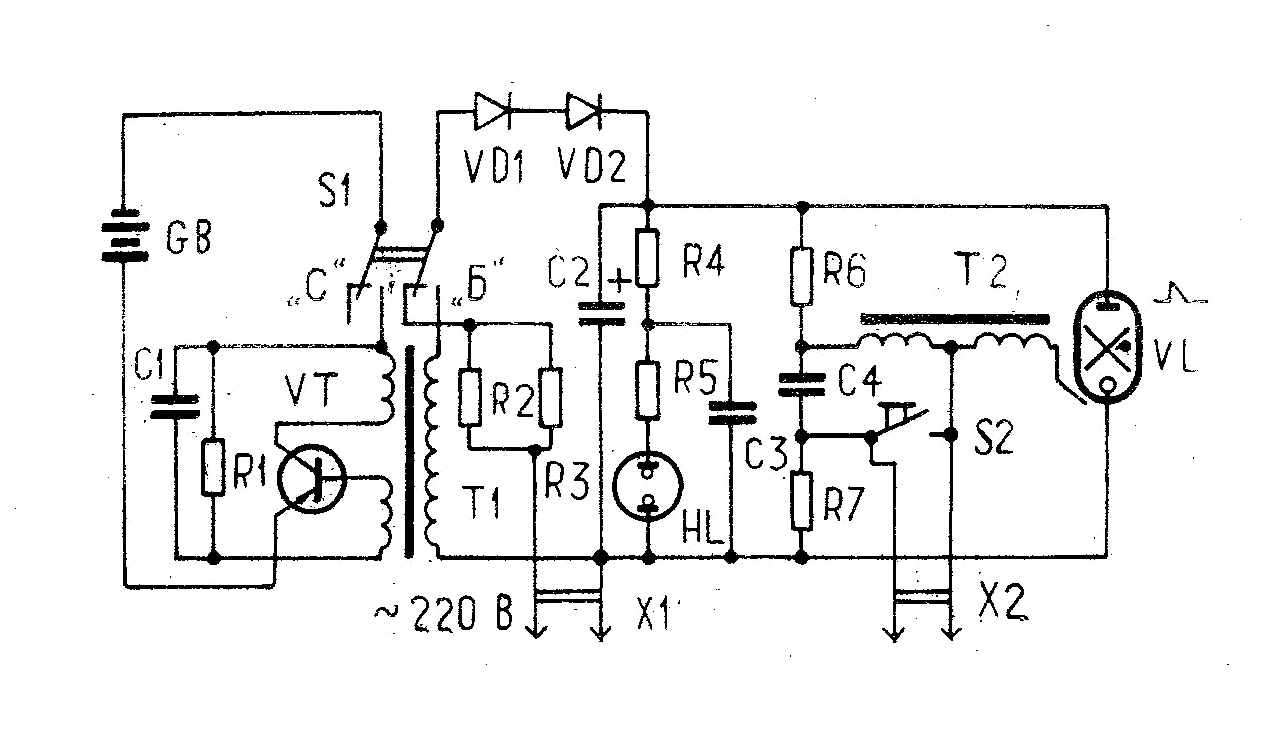The unique feature of this photo flash is the ability to power it from a battery in addition to the AC outlet. However this photo flash caused the breakers to trip when connected to the outlet (through a ~110V to ~220V step up converter). It is assumed to also be related to the old capacitors in the unit.
Fig. 4 presents the schematic diagram for the Чайка photo flash. The electrical components are listed below:
C1 - capacitor 50 uF, 12 V (model К50-12-12В-50мкф)
C2 - capacitor 1000 uF, 300 V (model К50-3ф-300В-1000мкф)
C3 - capacitor (model МБМ-160В-0,05мкф) 0.05 uF, 160 V
C4 - capacitor (model МБМ-160В-0,1мкф) 0.1 uF, 160 V
GB - battery (model 3336Л or 3336У) - Note: These were 4.5V batteries like model "3R12", with 2 batteries used in the flash
HL - neon lamp (model ИН-3)
R1 - resistor 560 Ohm, 1 W (model МЛТ-1-120-560 Ом)
R2, R3 - resistor 1.2 kOhm, 2 W (model МЛТ-2-1,2 кОм)
R4 - resistor 3 MOhm, 0.25 W (model МЛТ-0,25-3 МОм)
R5 - resistor 100 kOhm, 0.25 W (model МЛТ-0,25-100 kОм)
R6, R7 - resistor 4.7 MOhm, 0.5 W (model МЛТ-0,5-4,7 МОм)
S1 - switch (model ТП1-2)
S2 - button
T1 - converter transformer
T2 - pulse autotransformer
VD1, VD2 - diode (model КД105Г)
VL - xenon pulse gas discharge tube (model IFK-120)
VT - transistor (model П4ВЭ)
В - energy selection jumper
Д - diode (model Д248Б)
Кн - button
X1 - power cord
X2 - synchronization plug
Three flashes of this model were acquired and all worked without changing the capacitors.
Other photo flashes made in the Soviet Union assumed to be using the IFK-120 based on their photos include СЭФ-3, СЭФ-2, Norma FIL-41M, Norma FIL-46, Norma FIL-107, Norma FIL-11, Электроника Л5-01, Луч-68, Луч-70.
It may be necessary for some applications to modify the photo flashes described in this section to enable their operation from batteries. One way this can be done is by using specially designed Photoflash Capacitor Chargers. Some of such products are obsolete (i.e. TPS65552A) but may still be available for purchase.
These precautions are taken from the manuals for different flash models.
1) Due to a high capacity capacitor capable of storing a large charge used in the photo flash opening the enclosure and repairs of the photo flash are only allowed 6 hours after the disconnection from a power supply (after the capacitor is completely discharged). Or by triggering a flash (using the test button for example) and leaving the flash disconnected from the power supply for 3 hours.
2) Do not install the photo flash close to the sources of intense heat.
3) Do not connect the flash to a power supply if the flash is removed from the enclosure.
4) Do not use the flash if moisture is present on the surface of the flash.
5) Do not use acetone, gasoline or any other (flammable) solvents to clean up the surface of the flash. To clean the surface of the flash use a dry cloth instead.
6) Allow at least a 20 seconds delay between the successive uses of the flash (the recommended interval varies for different flash models and ranges from 10s to 20s).
7) Do not use the flash outside, in high humidity environment, in buildings with uncovered ground or with floor made of concrete or other conductive material when the flash is connected to the wall power outlet. Autonomous power supplies should be used for such applications.
8) Always disconnect the photo flash from the power supply and discharge the capacitor when changing the batteries.
9) Луч-М1, Luch-M1 (Ray-M1) model only: Changing the flash energy has to be done after disconnecting the flash from the power supply and discharging the capacitor.
10) Луч-М1, Luch-M1 (Ray-M1) model only: Do not touch the metallic contacts used to change the energy of the flash with other conductive objects when the flash is powered.
11) Do not pull on the power cord and the switch synchronization cable.



